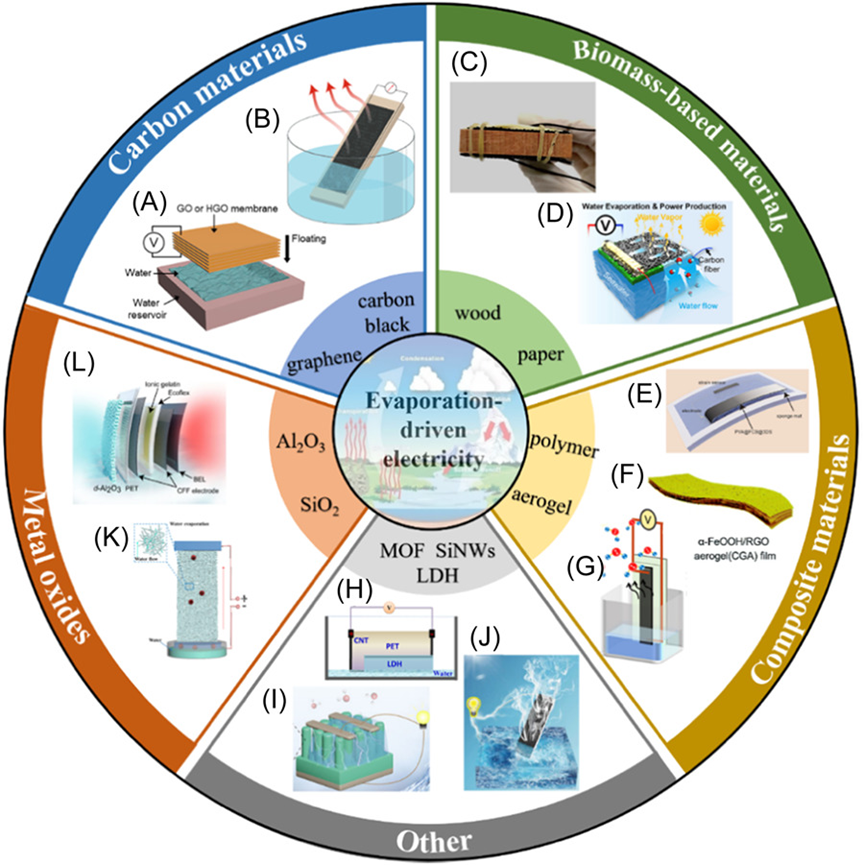Chunxiao Zheng, Weicun Chu, Sunmiao Fang, Jin Tan, Xiaofan Wang, Wanlin Guo
Interdisciplinary Materials, 2022
Abstract: Water constitutes the largest energy carrier on earth, absorbing more than 70% of the solar energy received by the earth's surface, yet its low exploitation has been a constant concern. The hydrovoltaic effect is an emerging technology that generates electricity through the direct interaction between nanomaterials and water of various forms (raindrops, waves, flows, moisture, and natural evaporation). Especially, the evaporation-driven hydrovoltaic effect is a spontaneous and ubiquitous process that can directly convert thermal energy from the surrounding environment into electricity without the demand for additional mechanical work, which shows unique advantages compared with other hydrovoltaic effects. A variety of nanostructured materials have been steadily developed for evaporation-driven hydrovoltaic devices (EHDs) in recent years. However, there has been a lack of a clear specification on the selection and design of materials for improving device performance. Herein, we first analyze the mechanisms of EHDs followed by a summarization of the recent advances in materials, including carbon materials, biomass-based materials, metal oxides, composite materials, and others. We then discuss the strategies for improving the energy conversion efficiency and the output power in terms of structural design, surface modification, and interface treatment. Finally, we provide an outlook on the potential applications of electricity generation, sensors, and desalination technology, as well as the challenges and prospects for the development of this emerging technology in the future.

Link: https://onlinelibrary.wiley.com/doi/full/10.1002/idm2.12033
--校内链接--
--校外链接--

微信公众号